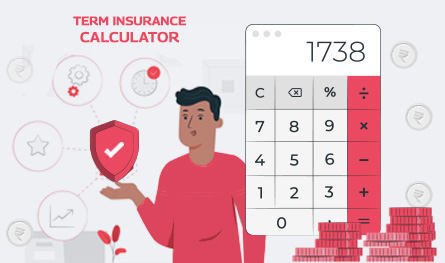Related Articles
 Jan 08, 2025
Jan 08, 2025
Is Varicose Vein surgery covered under the health insurance policy in India
 Health Insurance
Health Insurance

Where even a minor surgery or hospitalisation nowadays can set you back by a couple of lakhs within days, a health insurance policy needs to be more than just exigencies. Even when you feel you have invested enough in health plans, escalating medical costs and multiple health hazards can make your investment seem inadequate.

Yes, you do have options like upgrading the existing plans or investing further in a new policy. However, both are quite expensive and may be cumbersome with age. Top-up plans have become cost-effective solutions in such situations as they allow an increase in the sum assured at an affordable premium amount.
Unlike a normal health insurance plan, top-up plans include deductibles or threshold limits. Top-up plans come into play when your hospital bills exceed the medical insurance claim cleared by your insurance provider. An additional claim can then be filed based on the top-up policy amount for the same hospital bills for the treatment delivered. Hence, a top-up amount covers medical costs beyond the basic specified limit. It can be defined as a backup plan which comes into play once you have exhausted your sum insured limit.
The major difference between a top-up plan and a normal health insurance plan is the deductible or threshold limit, which needs to be opted for during the purchase. Only if your threshold limit (the base policy limit) is exhausted can you use your top-up amount.
For example, if you have a top-up plan of 10 lakhs sum assured and you have chosen a deductible or threshold limit of 3 lakhs, the policy will only cover charges beyond 3 lakhs. If you have a claim of 7 lakhs, the provider will fulfil your claim till 4 lakhs (7-3 lakhs). Whereas in a regular premium plan, the entire amount of 7 lakhs will be paid, but the premium will be much higher. For multiple hospitalisation cases in a year, you can also go for super top-up plans.
This is introduced by insurance providers in top-up plans to ensure the claim raised is genuine and not unnecessary. It acts as a deterrent to raise small, petty claims just because of the coverage available. Your premium amount may be quite low, but the amount deductible will be much higher, and you may also lose out on a no-claim bonus. It pushes you to raise only in case of a dire emergency and not during exigencies which are manageable.
A deductible can be compulsory or voluntary. As the name suggests, formar is strictly governed by the insurance provider. A voluntary deductible is the amount that you can opt for out-of-pocket payment in case of a medical claim. It is especially helpful if you are keen to go for a low-premium health policy. A cumulative deductible applies to a family floater plan where it is imposed on all members covered under the plan.
Significant factors that influence deductible amounts should also be considered while deciding on the trade-off between deductibles and premium amounts :
This may sound simple, but it will baffle you once you are in the process of deciding between various top-up plans available. You may want to go for a lower premium, but the coverage might not be sufficient, especially if you have a family floater plan. Similarly, if you think you want the insurance provider to cover the majority of the medical expenses but are willing to bear the premium cost, you may prefer lower deductibles. But how do you balance?
A higher deductible top-up plan typically comes with low premium options, which undoubtedly look quite lucrative. But you may choose this option under circumstances when you are healthy and young and do not preempt frequent hospital visits. If you have some emergency funds stacked to take care of emergencies, you may also like to go for higher deductibles. Moreover, if your monthly income can only support regular low premium payments, it is a better option than not having coverage at all.
Low-deductible top-up plans should be your choice if you are a family man with children and senior parents and need frequent hospital visits. If you or your family member has any chronic illness or history of any lifestyle disease, you may also anticipate higher medical costs in future and ideally go for lower deductibles with a higher premium. However, you need to ensure steady financial income to avoid payment failures and policy lapses.

Paybima Team
Paybima is an Indian insurance aggregator on a mission to make insurance simple for people. Paybima is the Digital arm of the already established and trusted Mahindra Insurance Brokers Ltd., a reputed name in the insurance broking industry with 17 years of experience. Paybima promises you the easy-to-access online platform to buy insurance policies, and also extend their unrelented assistance with all your policy related queries and services.

If you think of life insurance, chances are you are picturing something people buy in their 30s or 40s. But what if you are 65 or older and just getting started? The good news is that you are never too late. Whether you are thinking of easing the financial burden on your family, covering final expenses, or simply leaving behind a legacy, there are life insurance options tailored just for you.
This article will be a guide to life insurance for senior citizens above 65 years, explaining why it is important, the type of insurance options, and how to get the right policy for you.


Have you ever caught yourself lost in illusions about your daughter's future events, such as her university convocation and first day at work? Her university convocation. When she embarks upon her initial job after graduation will be the day.


Let’s be honest – life insurance planning isn’t exactly someone’s weekend hobby. It is the financial equivalent of flossing: we understand its importance, but we tend to put it off. But somewhere between balancing work and life, you might realise you need to have a solid plan in place – just in case.


We all know that health insurance policies offer a long list of inclusions. However, exclusions are also a crucial aspect of every policy. Overlooking policy documents can surprise you with hidden clauses that you didn't even know existed. To avoid such unpleasant situations and unexpected expenses during medical emergencies, it is crucial to uncover hidden clauses your health insurance policy may contain. When you buy health insurance online, make sure to know all about the policy before signing the document.
From least known exclusions to waiting periods and conditions in the fine print, hidden clauses can affect your overall experience. To help you out, here are the top hidden clauses of a health insurance policy that you should know.

.png)
Lymphocytes, a kind of white blood cells, are an extraordinary army of defenders functioning in the bustling world of our immune system for our body’s immune defence. Let’s know about these mighty warriors who are continually waging war against invading pathogens, viruses, and microbes in detail.
